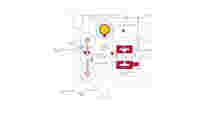Intelligent, Efficient Plant Control

Both Ex and non-Ex areas can be found in wastewater plants. The WAGO-I/O-SYSTEM 750 allows efficient plant control for both areas.
Several specialized and general regulations complicate the construction and operation of a wastewater plant, making it anything but easy. Planners and operators can significantly lower their expenditures by selecting an intelligent control system that supports standard and special applications equally.
WAGO-I/O-SYSTEM 750 Advantages:
- Ex and non-Ex area covered by one system
- Intrinsically safe, fieldbus-independent, flexible and robust
- Compact design encourages use in limited spaces
